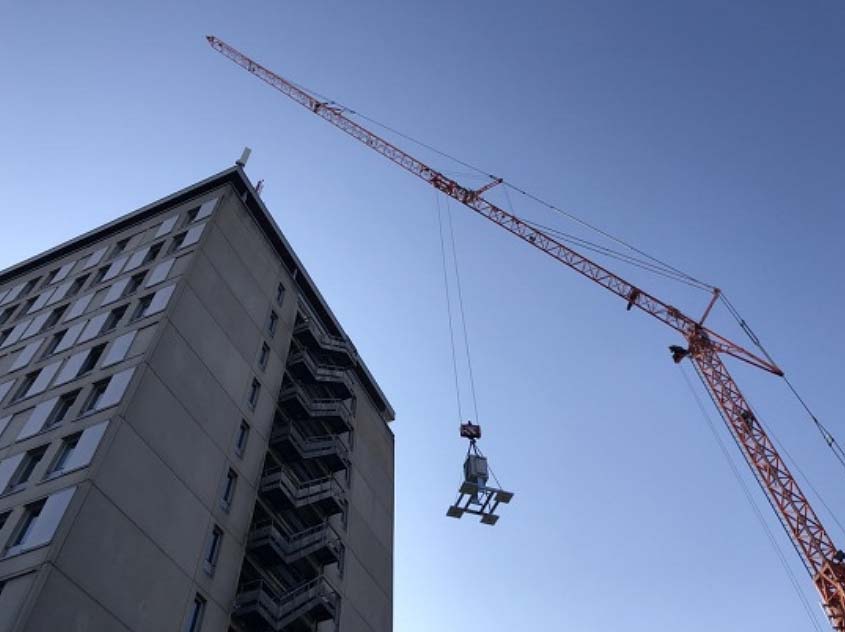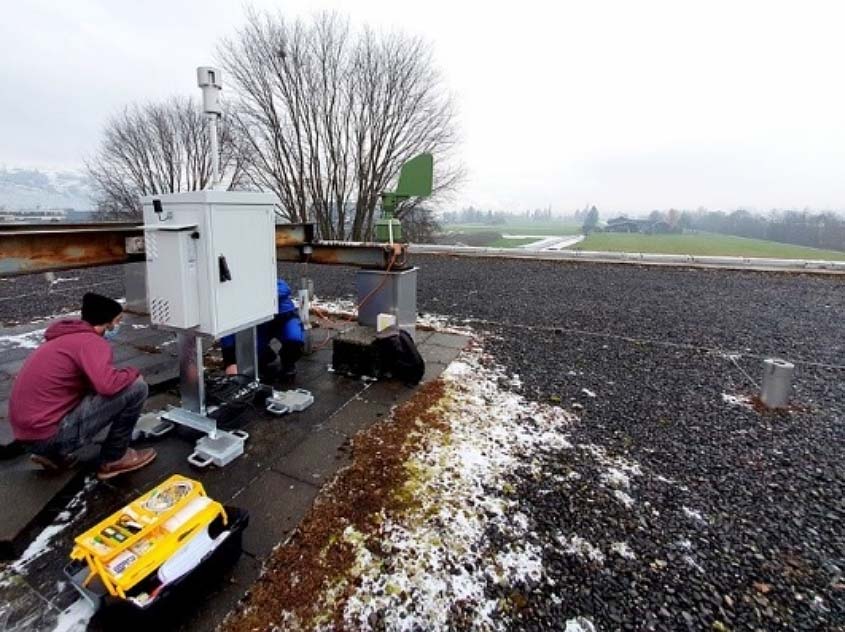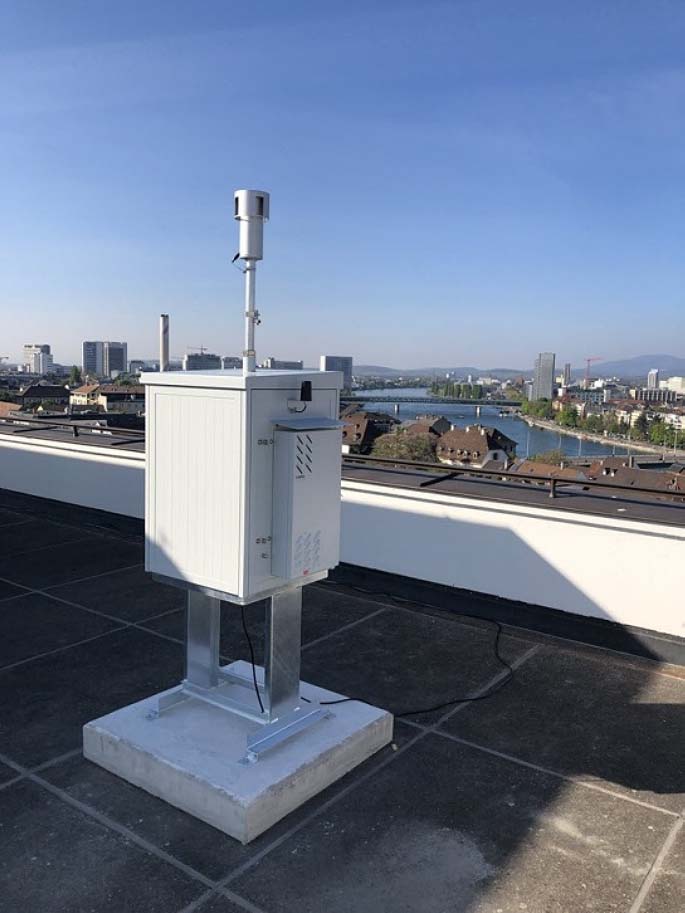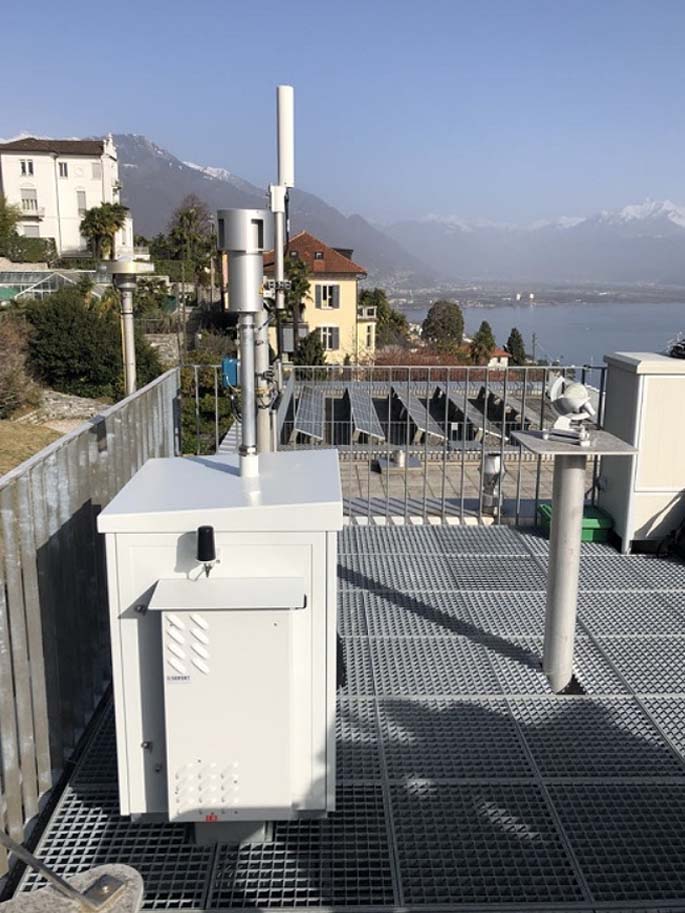Expansion of the MeteoSwiss automatic pollen measurement network
Spring is not very popular for people who suffer from pollen allergies.
In this web blog from Switzerland’s Federal Office of Meteorology and Climatology, MeteoSwiss, they report on the development of the automatic pollen measurement network, which enables a revolution of information for allergy sufferers and professionals.
Spring, the Season of Birch and Ash
Birch pollen, the main allergen in spring, is largely responsible for the symptoms experienced by allergy sufferers at this time of year. The plants of the birch family (hazel, alder, birch, hornbeam, hop hornbeam, alder), which flower one after the other from January to June, are responsible for a large proportion of allergies in the first months of the year (pollen information). Between 8 and 15 per cent of the population react to pollen from the birch family.
This year, after a weak flowering in 2021, the birches are laden with catkins bearing the male flowers. Therefore, an intense flowering and a rich pollen release is expected. The birch pollen season is about to begin north and south of the Alps, and ash pollen is also an important allergen in spring. Its pollen belongs to the olive family and triggers cross-reactions with olive tree pollen. The ash blossom in Ticino began as early as the end of February. On the northern side of the Alps, their pollen has been in the air since mid-March.
Via information available in real time on the MeteoSwiss website, you can now follow the development of the birch and ash pollen season hour by hour. This is possible thanks to the new automatic pollen monitoring network currently being set up by MeteoSwiss.
Ten stations are currently providing data, three are being installed and will soon be online, and five more will be set up by the end of the year. This will increase the pollen monitoring network from 14 to 18 sites, providing better coverage of the different regions of the country.
The comparison between manual measurements (Hirst) and the new automatic instruments (Poleno) is very good, as shown in Figure 1.

Figure 1. Comparison between the conventional manual measurements (Hirst) and the new automatic instrument (Poleno) at the beginning of the ash pollen season 2022 in
Work is underway to expand the detection capabilities of these instruments to measure not only an extensive list of airborne pollens, but also mold spores that can affect human or crop health.
A project of great consequence
Developing such a measurement network is not an easy task. Before starting, a study was carried out to determine the usefulness of the real-time information. The representativeness of the measurement sites was then assessed using the COSMO model in order to determine the number and position of the future measurement sites of the new measurement network. The existing sites of the manual network have proven themselves, only a small number of new sites will complement them. The validation and calibration of the new instruments will be carried out in collaboration with METAS, the Swiss Federal Institute of Metrology.
The project also includes the adaptation of the entire information chain: measurement data, forecasts, dissemination tools (website, app). 27 partners from 22 countries are participating in this program, which is coordinated by MeteoSwitzerland.
Real-time data as the basis for the forecast
One advantage of the new data is that it is available almost immediately and can be integrated into the pollen forecast model COSMO, which is updated several times a day.
With the manual measurement method currently used, the data is available every Wednesday, which does not allow the measurement data to be integrated into COSMO in real time. The adjustments made to this model will be the subject of a future blog.
Impressions from the installation:
The photos below gives an impression of the installation at the different locations.
They are equipped with the Swisens Poleno, an instrument whose operation is described here. It is worth noting that Switzerland is the first country in the world to have an automatic measurement network that allows real-time identification of pollen grains.
Ask us a question

Figure 2: Installation of a new pollen measuring device in Lausanne.

Figure 3: Installation of a new pollen measuring device in Buchs.

Figure 4: Installation of a new pollen measuring device in Basel.

Figure 5: Installation of a new pollen measuring device in Locarno.
Related news:
Never-before-seen data on the way to help Melbourne hay fever sufferers
Breakthrough technology is giving Melbourne hay fever sufferers never-before-seen data to help manage their allergies.
